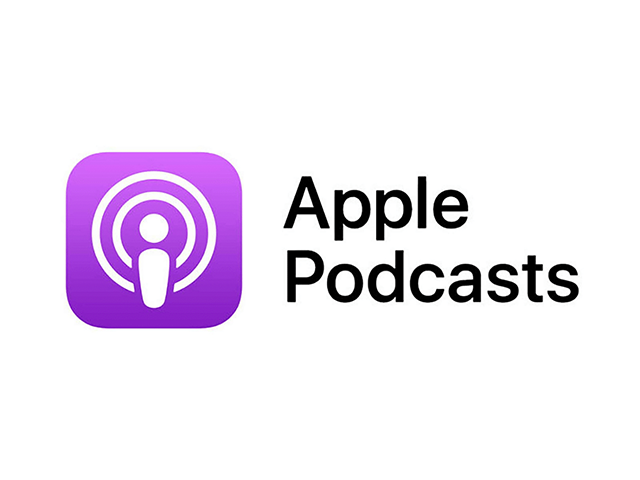Welcome to another episode of Finance For Physicians, where we dive deep into the financial matters that matter most to physicians. In this episode, your host, Daniel Wrenne, takes the stage solo to unravel the complexities surrounding the 457B plan – a topic that’s crucial for physicians managing their finances independently.
In this concise yet insightful episode, Daniel breaks down the fundamental aspects of the 457B plan. He sheds light on the key distinctions between the two primary flavors of this retirement plan: the governmental and non-governmental 457B plans. Daniel explains why having access to a governmental 457B plan can be a game-changer for your financial future, resembling the familiar terrain of 401(k)s and 403(b)s.
But, as with any financial choice, there are nuances and potential pitfalls to be aware of. Daniel delves into the crucial details, including distribution options and the unique challenges that come with non-governmental 457B plans. By the end of this episode, you’ll have a clear understanding of which 457B plan aligns with your financial goals and why making the right choice matters.
Don’t miss this chance to arm yourself with knowledge that can shape your financial future. If you have questions or want us to cover specific topics in future episodes, email Daniel at Daniel@financeforphysicians.co
Your financial well-being is our top priority, and we’re here to provide you with valuable insights every step of the way! Access our exclusive free resources for physicians and conquer financial stress. Access here.
Links:
Connect with me on my LinkedIn
Contact Finance for Physicians
To schedule a call with one of our awesome planners, book HERE.
Full Episode Transcript:
Daniel: Hey guys, hope you’re having a great day. I have been doing a couple shows and I think this will be the second one where we’re going to be exploring more of like a specific kind of like a tactical. That often comes up and this show will be a little bit shorter than our normal shows.
It’s just going to be me. And I’m going to talk through this question that we regularly see coming up. This one is super common with the families that we work with and it’s, it can be a pretty important little topic to, to make sure and understand, especially if you’re doing finances completely on your own.
I’m going to talk through that quick before I jump into that, I mentioned this in the last show, but I wanted to make sure and mention it again. We’re going to be pulling questions from our families that we work with that are regularly coming up. I’ll also pull some from like forums and those sorts of places that I am a part of, but even better would be.
If you guys can email me the questions you have or the topics you’re interested in. And I would love to cover those sorts of things that to me would be even better. Cause that’s ultimately, that’s what this is about is we want to make sure and provide value. So if you have questions please email those to me.
My email is Daniel. financeforphysicians. co not com, but co so. co. Please email me your questions or topics you’d be interested in covering and we’ll start to cover some of those as well. So today I wanted to talk about the 457B plan. So there’s a good chance. A lot of you already have access to a 457B plan.
A lot of you may even already be funding these plans. This plan is a little bit different. It’s kind of like in the flavor of 401k, 403b, but, but there’s a few other pretty important differences that I wanted to point out today. They’re typically plans that you see at nonprofit hospitals sometimes or government employers.
But, I think technically they can be anywhere. But that’s usually, you’re going to see it at the larger hospitals these four 57 B plans. So I wanted to talk through. Basics of what it is and this key distinction, cause there’s two different flavors of four 57 B plans. And there’s a huge difference between the two of them.
So at minimum, I want to make sure and convey what are the differences? So you can know like which one of these you have. All right. So 457B plan first of all, like there’s a couple of quick snippets. I’ll share about the plan and what, how it works. So it’s a work retirement plan. Most of the time it’s funded by the employees, but that’s not always the case.
technically could be funded by your employer, but most of the time it’s funded by the employee. One of the important things about the 457B plan is the contributions are. Under a different maximum rule, they go in addition to your four, four Oh three B four, four Oh one K limits.
So basically you can fund a four Oh one K slash four Oh three B to that max, but you can also separately fund a four 57 B to its max. And so they look at those. Accounts, they, the IRS looks at those accounts separately. So you get two buckets to fill up. If you’re trying to max these things out, you can max out the 457 B bucket, and you can also max out the 401k slash four Oh three B.
Those two plans fall under the same limit. So that’s an important distinction. The 457 B has a separate max and you can max it out in addition to some of these other plans. And that’s, that can be a pretty valuable tax shelter. the most important thing is looking at whether.
What flavor, I already mentioned, what flavor of 457B plan you have access to. So there’s two flavors. There’s the governmental 457B plan and then non governmental 457B plan. The governmental, obviously it’s, you know, when you’re working for an organization that has government funding, a lot of the universities are receiving government funding and therefore have governmental 457B plans.
And the difference is between the two. So before I get into those, the much better version of those two is the governmental 457B plan. So I think, that is a really, really good plan if you have access to a governmental 457B plan. And the main reason why is it functions very similarly to how a 401k or a 403b.
Or like other work retirement plans you’re used to, it functions very similar to those type of plans in that, like you can, fund the plan and it’s your asset and if you leave, you have lots of options, like you can move it to an IRA or move it to another 401k or leave it there for a while. the governmental 457B plan.
Functions very similarly to a four or three B or 401k plan. They can even allow a Roth option on those governmental 457 B plans. And so there’s not a lot of baggage, not a lot of like downsides to it. there’s even a few upsides to it. I’m not going to get into the details, but basically for the sake of today, governmental 457 B plan is.
basically like an extra, tax shelter very, very comparable to your 401k slash 403b. And that’s a really, really good thing to have access to. So that’s the governmental 457b plan. The other flavor is the non governmental 457b plan. So the non governmental 457b plan is not nearly as. Solid as the governmental plan.
And the reason there’s a few reasons. the reason, well, reason number one is that it is subject to the hospital’s creditors. So what that means basically is if the hospital you work for were to go. Bankrupt or something, or have a major lawsuit that causes creditors to be after them. basically if they’re having financial problems and get into trouble and things go south, in the event that there’s like the bankruptcy is the classic example.
Like they’re just like upside down and they’re trying to make good on the debts that they owed. this type of plan falls into that calculation of the hospital’s assets. So basically you could lose the money completely if the hospital were to blow up financially. Now, I don’t know that that’s like common, but it’s not impossible.
So it’s super important. I would say that’d be very, very, unpleasant, you know, at minimum, but I don’t want it to be a surprise. That’s the main thing. So you want to like, know that’s a thing going into this. So if you have this non governmental flavor. Of four 57 B plan, you need to know that like, it’s technically your hospital’s asset while you’re there and while you’re working.
so, for example, if my hospital was like in rough shape financially, they had some problems. I’d be like, Oh, that’s more of a reason to steer away from that sort of plan. Cause, or if just the idea of that was very concerning. I would be really cautious about funding those, that sort of plan.
So there’s a few other downsides before I mentioned that I wanted to also say, like, I’m sure you’re thinking like, how do I know which one of these plans I have? the simplest way is just ask your employer. Hopefully you can find somebody in your benefits office that can tell you one or the other.
Like the question is. Do I have a four 57 B plan that’s governmental or non governmental? And hopefully they can say one or the other. if you work with us, just, a lot of times we already know, uh, we’ve already looked into it. but if you’re curious, let us know. So, another big downside of the four 57 B plan is that it has very rigid options for like.
Distribution, they call it. So if you leave, if you quit your job early or even in retirement, there’s typically very inflexible options. So that really depends. It can vary a lot, but it depends on your specific plan. So the second thing I would want to look into, if I’m in this category, I would want to know, like, what are my options if I were to leave?
early or terminate employment, or what are my options if I retire? So typically with these non governmental plans, it’s like something along the lines of, I guess the worst or the least flexible I’ve seen is where it’s like. If you leave, you got to take all of it out. in other words, you got to take it all as income.
That’s like the least flexible, least appealing, I guess. And I’ve seen it set up that way. And that’s a problem because you’re typically going to a new job and you’re going to continue earning income. And so this ends up being like an income spike on top of the income you’re already earning. And that when you make more income on top of what you’re already earning, that’s the classic thing will push you up into higher tax brackets.
So it can become kind of like a tax bomb, that gets created just because they force you to take it out. So that’s kind of like the, worst case scenario in, all scenarios, you’re not going to be able to roll them into like a IRA or a 401k like you normally would with a work retirement plan. you don’t have those options are out of play. so, you know, you’re either going to have to leave it there or distribute it like I just talked about, or you can sometimes move it to a similar non governmental 457B plan and, do a transfer that away. So, distribution options are really important. That’s the second biggest downside.
So. You want to know like what happens if you leave early, or even if you retire, like what are those options now? Sometimes they’re not quite as bad. Maybe they’ll say like you can delay getting the money until retirement and then you can spread it out over a long period of time. That’s the most appealing is if they allow you to leave the money in there and not receive it until retirement.
That’s. Much more preferred. So deciding on that plan, let’s say you have the governmental 457 B plan. I would just look at it just like a 401k. It’s almost like a slightly better 401k. and so it’s generally speaking like a really good thing to fund. and it’s good tax shelter and, a great thing to max out.
if you need to save for retirement, that’s pretty straightforward. Now the non governmental plan, I think the question is like. Where do you sit on the spectrum of like feelings about the, subject to creditors, like the part that your hospital owns it, and then the distribution options being super weak.
If you, for instance, work for a very super secure hospital, that’s solid financially and the distribution options are really flexible and you’re probably going to work there until you retire. It might not be the worst thing to do. I mean, you still get to put it into the plan with pre tax dollars.
So there is still good. Tax benefits associated with it. On the other hand, if you’re, working for a hospital, that’s not very secure financially, and you’re probably going to leave after a few years and go to a different hospital, that’s going to continue to pay you. And there’s very weak distribution options in that instance.
Like, let’s say they make you take it all out at once. I would be very hesitant to fund that sort of plan. So, that’s the four 57 B plan. hope that’s been helpful. Please let us know. Like I said. Other topics you want to cover. if you have questions even this particular topic, feel free to email me and we would love to help.









